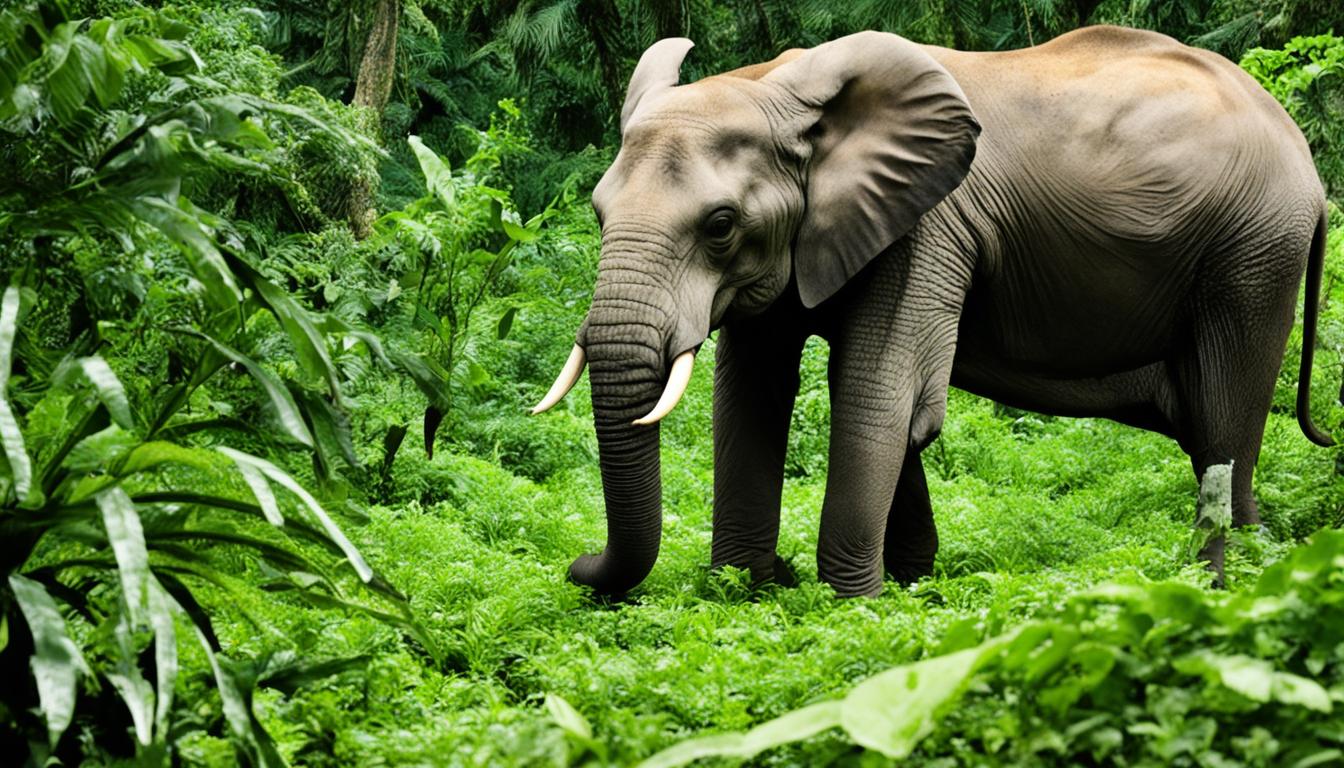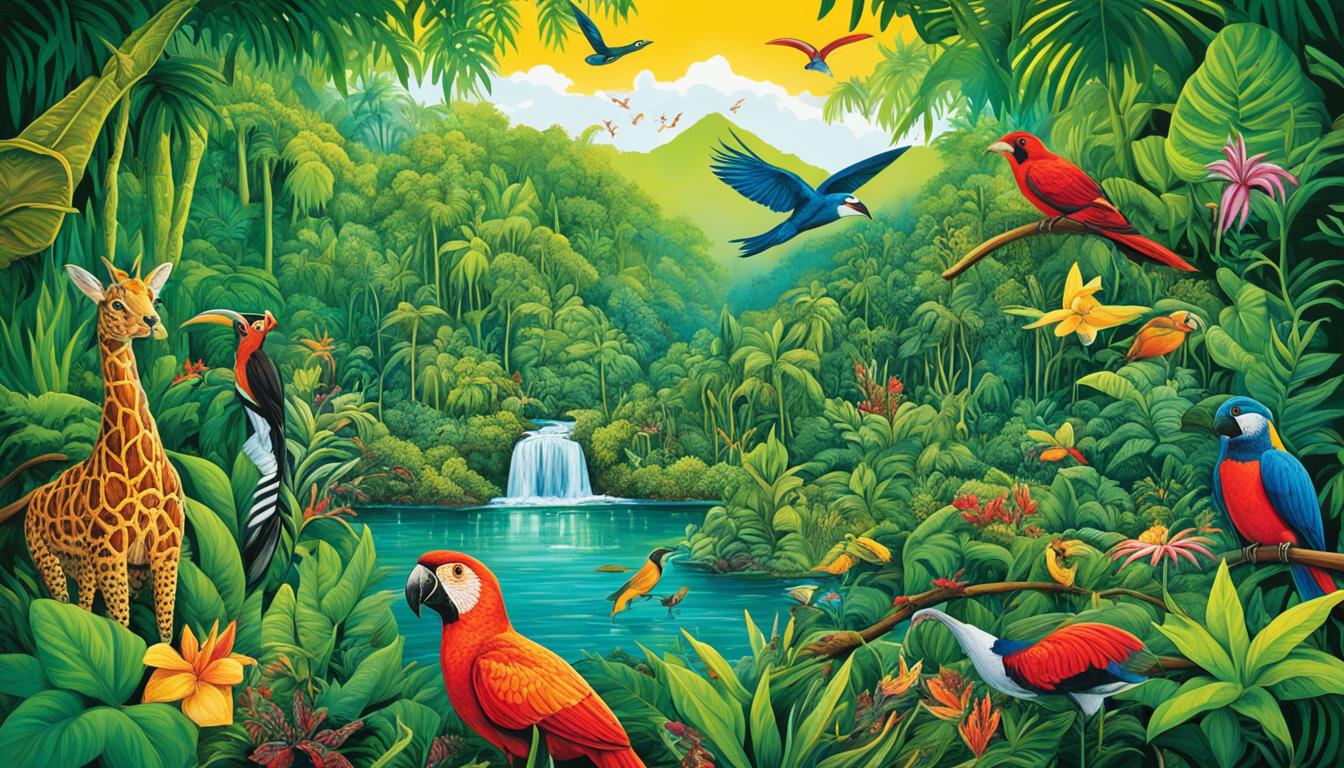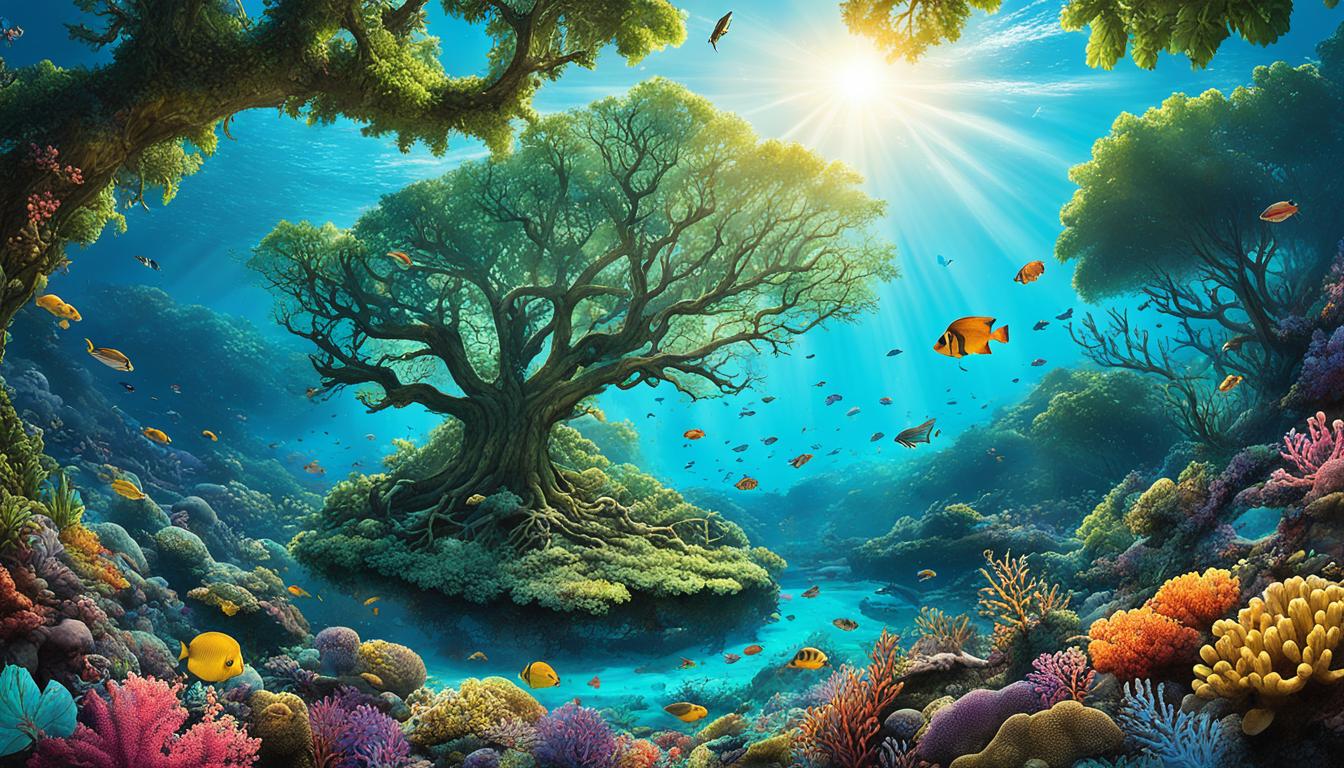Tonga Biodiversity: Animal and Plant Species and What Is Under Threat
Did you know that the Kingdom of Tonga, nestled in the South Pacific Ocean, is home to a staggering array of plant and animal species? With 171 islands spanning over 700,000 km2, Tonga boasts a biodiversity hotspot that rivals larger nations. But beneath the surface of this paradise lies a harsh reality: Tonga’s magnificent biodiversity is under threat.
Key Takeaways:
- Tonga is a biodiversity hotspot, with a wide range of plant and animal species.
- The reduction of traditional crop species, overfishing, and pollution are major threats to Tonga’s biodiversity.
- The expansion of agriculture and invasive species contribute to the loss of habitats.
- Efforts are underway to protect Tonga’s biodiversity, including the implementation of the National Biodiversity Strategy and Action Plan.
- Collaboration between government agencies, local communities, and international organizations is essential to safeguard Tonga’s precious ecosystems.
Tonga’s Flora and Fauna
Tonga’s rich biodiversity extends to its diverse flora and fauna. The country is home to a wide variety of fern and angiosperm species, boasting a total of 419 species. The lush green landscapes of Tonga offer a haven for plants, nurturing their growth and contributing to the stunning natural beauty of the islands. From delicate ferns to vibrant flowering plants, Tonga’s plant diversity is a sight to behold.
But it’s not just the plants that thrive in Tonga. The country also supports a diverse range of animal species, both terrestrial and marine. Among them are 20 species of birds, which find their habitat in the tropical forests and coastal areas of the islands. Two of these bird species, the Tongan Whistler and Polynesian Megapode, are unique to Tonga and considered near-threatened. Their presence adds to the ecological significance of Tonga’s avian population.
Additionally, Tonga is a sanctuary for more than 100,000 Sooty Terns, which gather on the islands in large numbers. These seabirds, with their distinctive black plumage, create a remarkable sight against the backdrop of the Pacific Ocean. Tonga’s volcanic islands of Late and Tofua are renowned for their pristine native forests that support a wide array of bird and reptile species.
The diverse flora and fauna of Tonga contribute to the country’s unique ecosystems and play a vital role in maintaining the delicate balance of nature. It is crucial to preserve and protect Tonga’s biodiversity to ensure the continued existence of these remarkable plant and animal species.
Threats to Tonga’s Biodiversity
Tonga’s biodiversity is at risk due to several threats that pose a significant danger to its survival. The reduction of traditional crop species is one of the primary concerns, especially as you move further north from Tongatapu. The small size and remoteness of the islands contribute to the decline in these crops, jeopardizing the diversity of plant species in the region.
Overfishing and pollution also present significant challenges to the marine biodiversity of Tonga. With nearly 40% of the country’s coral reefs currently threatened, urgent action is needed to protect these delicate ecosystems. The impact of overfishing and pollution not only affects the coral reefs but also endangers the numerous marine species that rely on these habitats for their survival.
The indiscriminate expansion of agriculture poses further risks to Tonga’s biodiversity. As land is cleared for agricultural purposes, habitats are lost, leaving many plant and animal species vulnerable. Additionally, the spread of invasive species is heightened as agricultural activities encroach upon new areas, further disrupting the delicate balance of the ecosystem.
The Tongan Whistler and Polynesian Megapode, both unique to Tonga, are among the endangered species that face the dangers brought about by these threats to biodiversity. It is crucial to address these challenges promptly and implement effective conservation measures to protect the diverse range of plant and animal species found in Tonga.
Marine Biodiversity in Tonga
Tonga’s marine biodiversity is a treasure trove of thriving ecosystems, covering approximately 700,000 km2 of territorial waters. However, the overall trend of marine biodiversity in Tonga remains a mystery due to the lack of a comprehensive baseline study. Nevertheless, alarming signs of decline are evident, particularly in the inshore fisheries sector, which has seen a decrease in resources such as sea cucumbers and aquarium production.
The main fisheries in Tonga consist of offshore species like tuna, snapper, grouper, as well as inshore fisheries. However, unsustainable fishing practices, combined with an increasing demand for marine products, including sea cucumbers and seaweeds, pose significant threats to the delicate balance of marine biodiversity in Tonga.
One area of concern is Tonga’s coral reefs, with approximately 40% of them currently facing threats. Overfishing and pollution from human activities are the primary culprits behind this decline. These threats put the diverse array of coral species and the countless marine organisms that depend on them at risk.
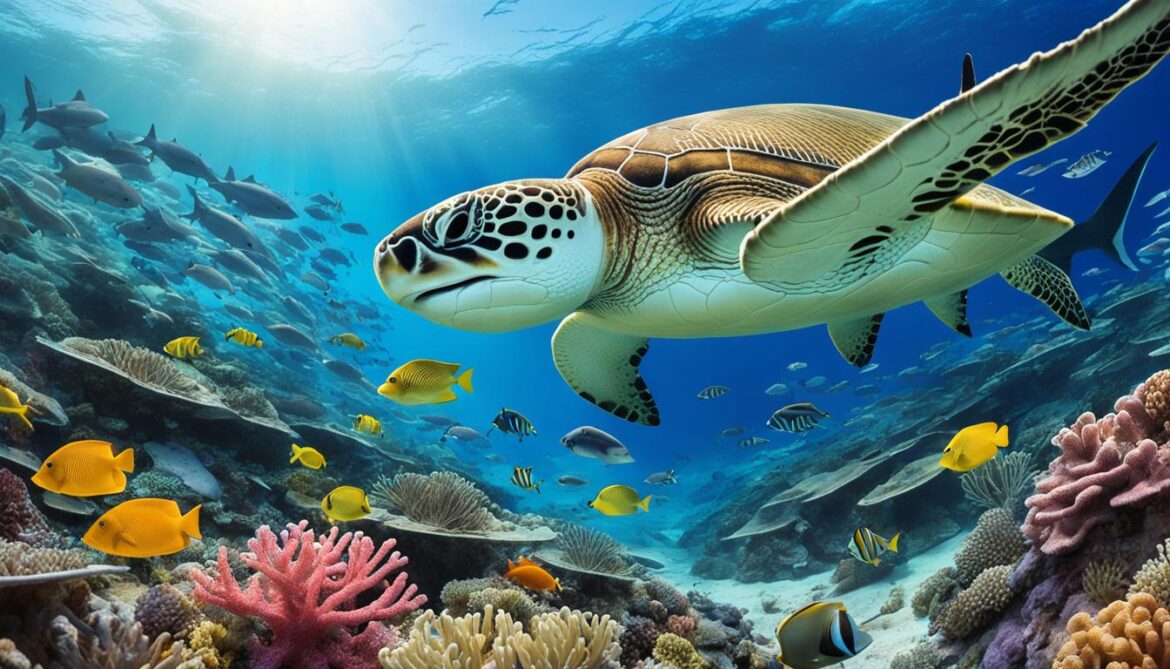
Efforts to protect marine biodiversity in Tonga are crucial to preserve the country’s natural heritage. Sustainable fishing practices, the establishment of marine protected areas, and the reduction of pollution are essential steps towards conservation. Promoting awareness and education regarding the importance of marine biodiversity can also play a significant role in driving change and fostering a sense of responsibility among the local community and visitors alike.
Plant Diversity in Tonga
Tonga is known for its remarkable plant diversity, encompassing a wide range of species including fruit trees, root crops, and indigenous plants. The country’s lush landscapes are adorned with vibrant flora, displaying a rich tapestry of colors, shapes, and scents.
However, Tonga’s plant diversity is not without challenges. As you venture further north from the main island of Tongatapu, there has been a noticeable reduction in the variety of traditional crop species. This decline can be attributed to several factors, including the small size of the islands and the competing demands for land use.
This reduction in traditional crop species poses a significant risk to Tonga’s biodiversity. It threatens the loss of valuable genetic materials that are endemic to the region, jeopardizing the environmental balance and cultural heritage of the country.
Moreover, Tonga’s modern cropping system heavily relies on the production of a few select varieties of a single species crop. This focus on monoculture has led to a lack of diversity in root crop species, especially when compared to the abundance of fruit tree species.
To address these challenges and protect Tonga’s plant diversity, conservation efforts are essential. It is crucial to preserve the genetic materials of traditional crop species and promote sustainable agriculture practices that enhance biodiversity. By embracing a holistic approach to conservation, Tonga can ensure the preservation of its unique plant heritage for future generations to enjoy.

Endangered Species in Tonga
Tonga is home to several endangered species that require immediate attention for their conservation. Two notable examples are the Tongan Whistler and Polynesian Megapode, which are endemic to Tonga and classified as near-threatened. The decline in their populations highlights the urgent need for effective conservation measures to ensure their survival.
Another species of concern in Tonga is the Sooty Tern, with more than 100,000 individuals found in the country. The Sooty Tern is a seabird that relies on Tonga’s coastal and marine areas for nesting and foraging. However, threats such as habitat degradation and climate change pose significant risks to its population.
Conservation efforts are essential to protect these endangered species and maintain the delicate ecological balance in Tonga. By implementing targeted conservation strategies, including habitat preservation, captive breeding programs, and community engagement, Tonga can work towards safeguarding its unique biodiversity for future generations.
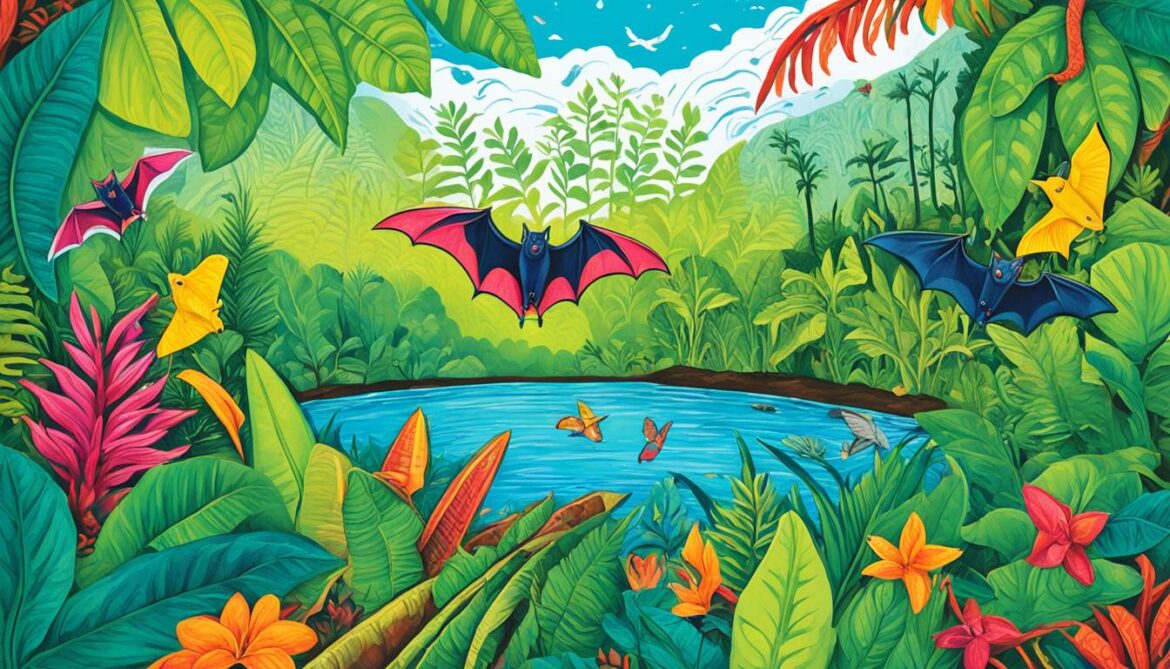
“The decline in their populations highlights the urgent need for effective conservation measures to ensure their survival.”
Effective conservation efforts require partnerships between government agencies, local communities, and international organizations. By collaboratively addressing the threats faced by these endangered species, Tonga can make significant progress in protecting its valuable biodiversity.
Endangered Species in Tonga:
| Species | Status |
|---|---|
| Tongan Whistler | Near-threatened (Endemic) |
| Polynesian Megapode | Near-threatened (Endemic) |
| Sooty Tern | Population at risk due to habitat degradation and climate change |
These endangered species serve as flagships for conservation in Tonga, drawing attention to the broader need for sustainable practices and ecosystem protection. By prioritizing these species and implementing targeted conservation actions, Tonga can play a crucial role in safeguarding its natural heritage and contributing to global biodiversity conservation.
Efforts to Protect Tonga’s Biodiversity
Tonga recognizes the importance of protecting its biodiversity and has implemented various measures to address the threats it faces. The country adopted its first National Biodiversity Strategy and Action Plan (NBSAP) in 2006, which outlines strategies and actions for biodiversity conservation. Tonga is also a participant in GEF-supported projects focused on biodiversity conservation and the management of major threats.
One of the significant efforts to protect Tonga’s biodiversity is the establishment of community-based marine managed areas. These areas aim to conserve marine ecosystems and ensure sustainable fishing practices. By involving local communities in the management of these areas, Tonga promotes a sense of ownership and responsibility, leading to more effective conservation outcomes.
Furthermore, Tonga is actively working towards strengthening legislation and enforcement for the protection of biodiversity. This includes the establishment of protected areas and the implementation of regulations to control activities that may harm ecosystems and endangered species.
“The conservation of Tonga’s biodiversity is a priority for our nation. We are committed to preserving the unique ecosystems and endangered species that call Tonga home.” – Dr. Mata Aho, Minister of Environment, Tonga
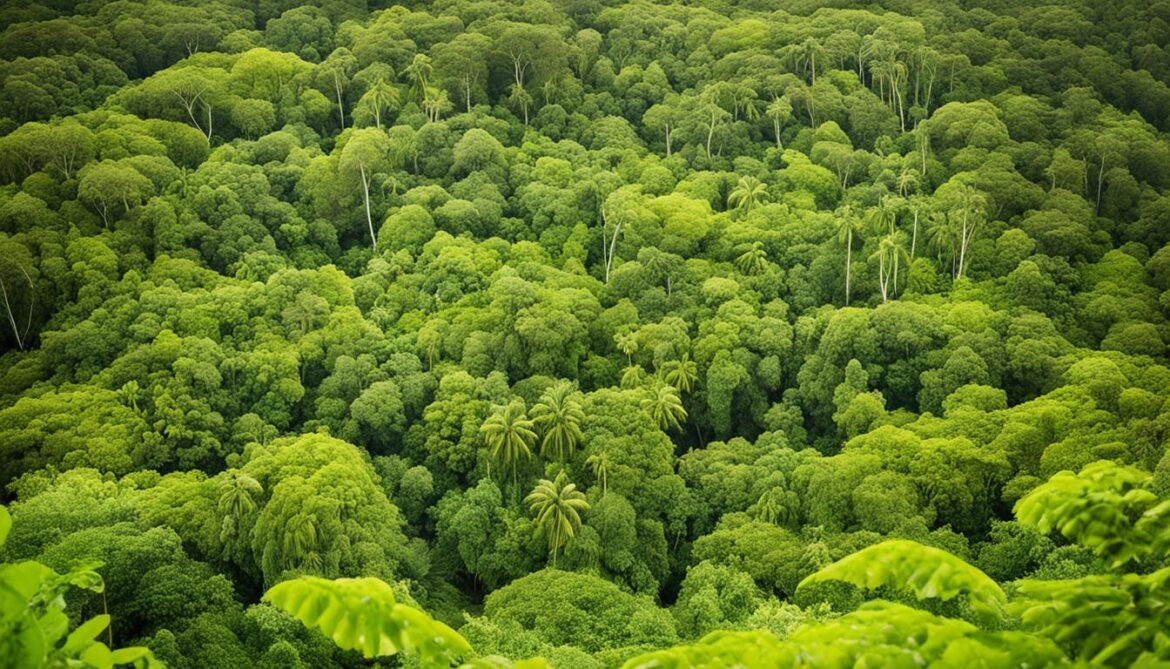
These conservation efforts in Tonga are vital to mitigating the loss of endangered species and preserving the ecological balance. Through the NBSAP, community initiatives, and strengthened legislation, Tonga aims to ensure the long-term sustainability of its biodiversity and the well-being of its natural ecosystems.
Summary of Efforts to Protect Tonga’s Biodiversity:
| Efforts | Description |
|---|---|
| National Biodiversity Strategy and Action Plan (NBSAP) | Adopted in 2006, it outlines strategies and actions for biodiversity conservation in Tonga. |
| GEF-supported projects | Tonga participates in projects focused on biodiversity conservation and addressing major threats. |
| Community-based marine managed areas | Established to conserve marine ecosystems and promote sustainable fishing practices. |
| Strengthened legislation and enforcement | Tonga is working towards implementing regulations to protect biodiversity and endangered species. |
Tonga’s National Biodiversity Strategy and Action Plan
Tonga’s commitment to conserving its biodiversity is reflected in the National Biodiversity Strategy and Action Plan (NBSAP). This comprehensive roadmap, developed following the CBD prescribed process, includes inputs from community and public consultation. By addressing key issue areas such as forest ecosystems, marine ecosystems, species conservation, agrobiodiversity, and local community participation, the NBSAP ensures a holistic approach to biodiversity conservation in Tonga.
The NBSAP recognizes the importance of Tongan ecosystems and aims to protect and restore their integrity. It emphasizes the need for effective species conservation measures and local community engagement. The plan also addresses the critical issue of access and benefit sharing, ensuring that the benefits derived from biodiversity are shared equitably.
However, the successful implementation of the NBSAP faces various constraints, including the lack of technical information, capacity, and awareness. Weak legislation also poses challenges to biodiversity conservation efforts. Tonga is actively working on overcoming these constraints by revising and updating the NBSAP to meet evolving conservation needs and ensure its continued effectiveness.
“The National Biodiversity Strategy and Action Plan provides a robust framework for Tonga to safeguard its rich biodiversity and ensure the sustainable use of its natural resources. By engaging local communities and addressing critical issues, Tonga is taking significant steps towards preserving its unique ecosystems for future generations.” – Dr. Sione Ngongo, Director of the Tonga Department of Environment
To illustrate the specific actions identified in the NBSAP, the following table highlights some of the key targets and responsible agencies:
| Issue Area | Key Targets | Responsible Agencies |
|---|---|---|
| Forest Ecosystems | – Increase protected forest areas by 5% | – Ministry of Agriculture, Food, Forestry and Fisheries |
| Marine Ecosystems | – Establish marine protected areas covering 20% of Tonga’s exclusive economic zone (EEZ) | – Ministry of Fisheries |
| Species Conservation | – Implement conservation programs for endangered species, including the Tongan Whistler and Polynesian Megapode | – Ministry of Environment |
| Agrobiodiversity | – Promote sustainable agriculture practices and increase the diversity of traditional crop species | – Ministry of Agriculture, Food, Forestry and Fisheries |
Tonga’s National Biodiversity Strategy and Action Plan serves as a vital tool for safeguarding Tonga’s unique biodiversity. With continuous efforts to address implementation constraints and improve conservation measures, Tonga is on the right path towards ensuring the long-term ecological balance and preservation of its precious ecosystems.
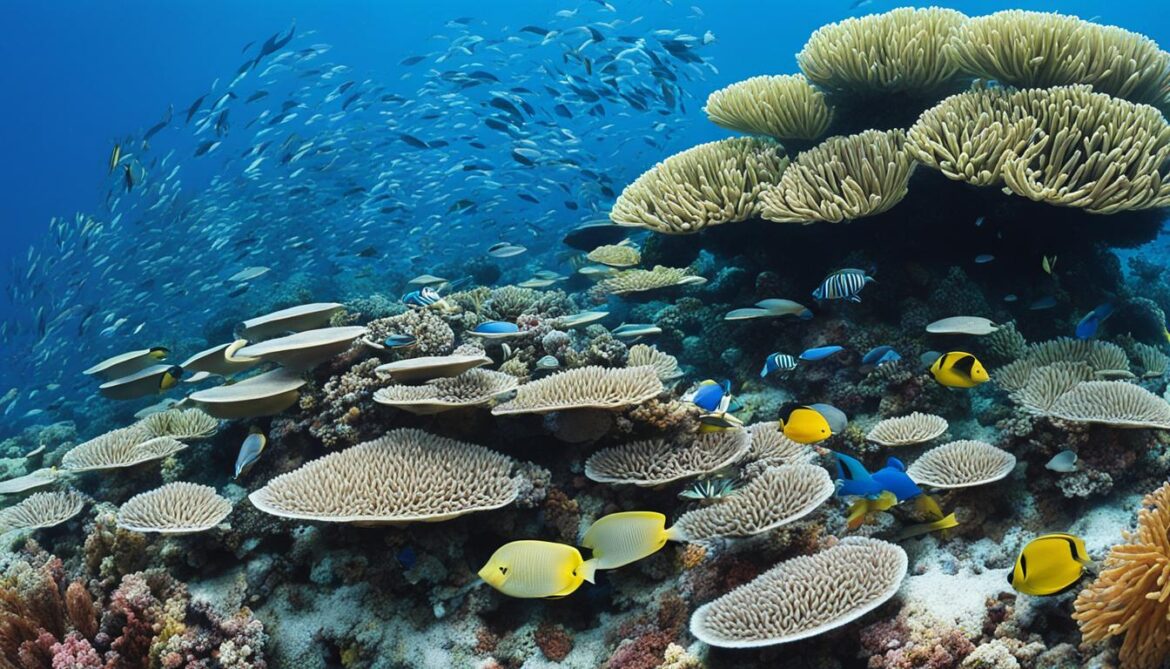
Funding and Implementation of the National Biodiversity Strategy and Action Plan
Tonga’s National Biodiversity Strategy and Action Plan (NBSAP) plays a crucial role in conserving the country’s unique biodiversity. However, its successful implementation requires adequate financial resources and effective mechanisms. Luckily, donor funding for projects focused on species conservation has increased, enabling Tonga to participate in significant initiatives supported by the Global Environment Facility (GEF) for biodiversity conservation.
The NBSAP is a comprehensive roadmap that outlines specific actions to be taken for each theme area, including forest ecosystems, marine ecosystems, species conservation, agrobiodiversity, community participation, and access and benefit sharing. The plan identifies responsible agencies and organizations for the implementation of these actions, ensuring a coordinated effort to protect Tonga’s biodiversity.
Monitoring indicators are included in the NBSAP to guide the implementation process and ensure that progress is being made. These indicators help measure the effectiveness of conservation efforts and identify areas that require further attention. Moreover, efforts are underway to strengthen coordination, capacity-building, and the integration of biodiversity conservation into all levels of development planning.
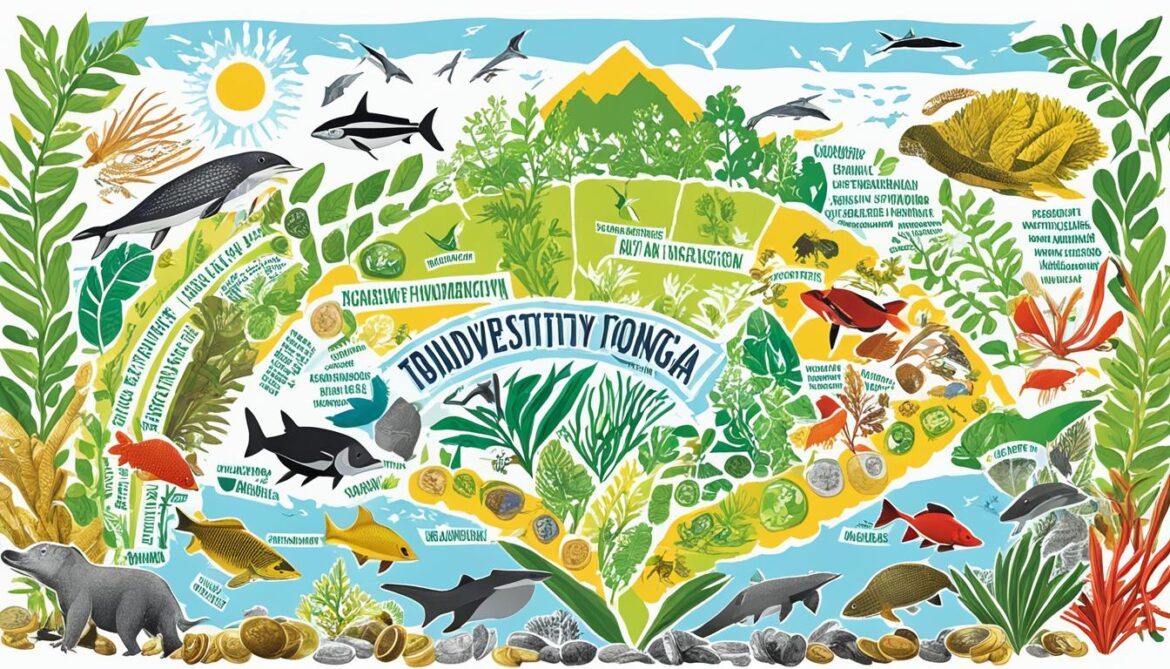
Quotes:
“Conserving Tonga’s biodiversity is a shared responsibility, and we are grateful for the funding support and partnerships that enable the implementation of our National Biodiversity Strategy and Action Plan. Together, we can safeguard the ecological richness of our islands and ensure a sustainable future for generations to come.” – Dr. Sione Ngongo Kioa, Director of Tonga’s Department of Environment
Donor Funding for Biodiversity Conservation Projects
| Donor | Project | Amount |
|---|---|---|
| Global Environment Facility | Protection of Endangered Bird Species | £1,500,000 |
| World Wildlife Fund | Marine Protected Areas Establishment | £800,000 |
| United Nations Development Programme | Community-Based Conservation Initiatives | £1,200,000 |
Donor funding has been instrumental in supporting various biodiversity conservation projects in Tonga. Through these partnerships, important initiatives, such as the protection of endangered bird species and the establishment of marine protected areas, have been made possible. The table above highlights some of the significant contributions from key donors in ensuring the successful implementation of Tonga’s National Biodiversity Strategy and Action Plan.
Monitoring and Review of the National Biodiversity Strategy and Action Plan
Tonga’s National Biodiversity Strategy and Action Plan (NBSAP) plays a crucial role in guiding biodiversity conservation efforts within the country. This comprehensive document outlines clear objectives, strategies, and actions that aim to safeguard Tonga’s unique natural heritage. To ensure the continued effectiveness of the NBSAP, regular monitoring and review processes are implemented.
The NBSAP incorporates a matrix of monitoring indicators that assess the progress and impact of proposed actions. These indicators focus on measuring the outcomes and outputs of conservation initiatives, providing valuable insights into the status of biodiversity in Tonga. By tracking progress, stakeholders can identify any gaps or areas requiring further attention.
The monitoring and review of the NBSAP serve as a vital tool for evaluating the success of biodiversity conservation efforts. It allows decision-makers to make informed adjustments, refine strategies, and prioritize actions to achieve the conservation goals outlined in the plan. Furthermore, it facilitates adaptive management by ensuring that conservation approaches can be adjusted in response to emerging challenges or new scientific knowledge.
Monitoring and review of the NBSAP are essential components of Tonga’s commitment to conservation. Regular assessments provide an opportunity to reassess priorities, identify opportunities for strengthening implementation, and foster a culture of continuous improvement in biodiversity management.
The review process involves engaging key stakeholders, including government agencies, local communities, and international organizations. Their input and expertise contribute to a comprehensive evaluation and ensure that the NBSAP remains relevant and effective in addressing the conservation needs of Tonga.
By fostering collaboration and engagement, Tonga’s monitoring and review processes create a robust framework for adaptive management and sustainable biodiversity conservation. It enables the identification of emerging issues, the refinement of strategies, and the mobilization of resources to protect and manage the country’s unique ecosystems.
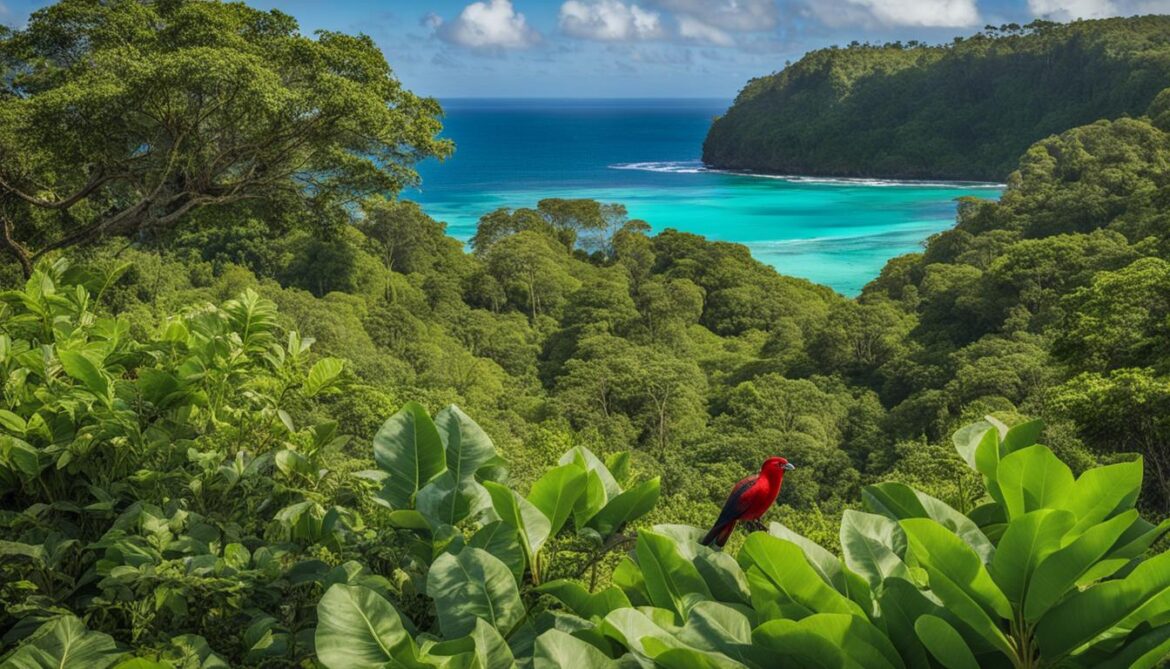
Conclusion
Tonga’s biodiversity is a valuable asset that needs to be protected for the sake of future generations. Efforts to conserve Tonga’s biodiversity include the establishment of protected areas, community-based management, and the implementation of the National Biodiversity Strategy and Action Plan. These initiatives are crucial for preserving the unique ecosystems and diverse range of plant and animal species found in Tonga.
However, challenges persist in the form of the reduction of traditional crop species, overfishing, pollution, and the expansion of agriculture. These threats put Tonga’s biodiversity at risk and require urgent attention. Continued collaboration between government agencies, local communities, and international organizations is vital to address these challenges and ensure the long-term conservation of Tonga’s biodiversity.
By joining forces, we can work towards mitigating the loss of endangered species, protecting habitats, and creating a sustainable future for Tonga’s biodiversity. It is through combined efforts and collective action that we can safeguard the natural heritage of Tonga for generations to come.



